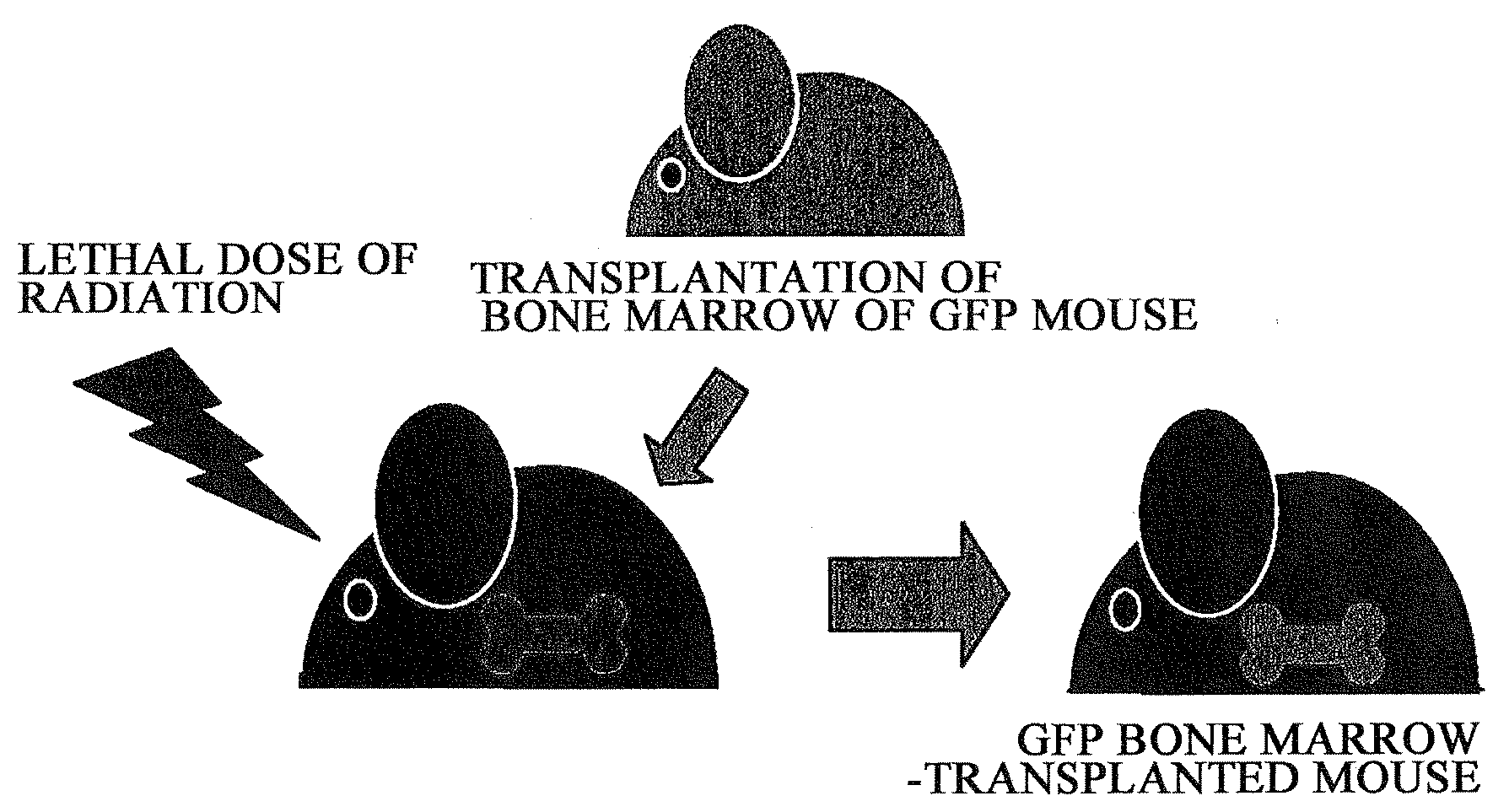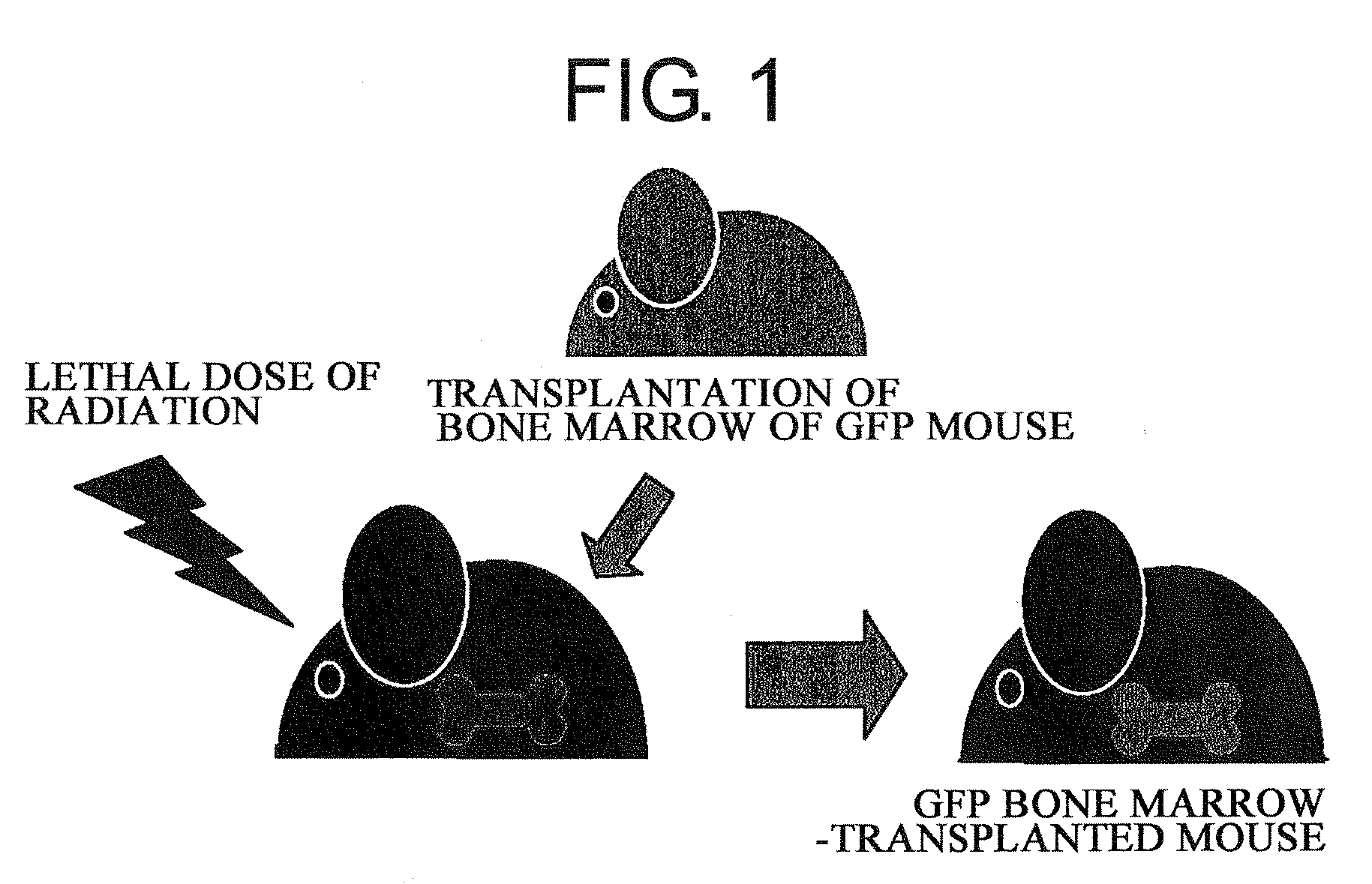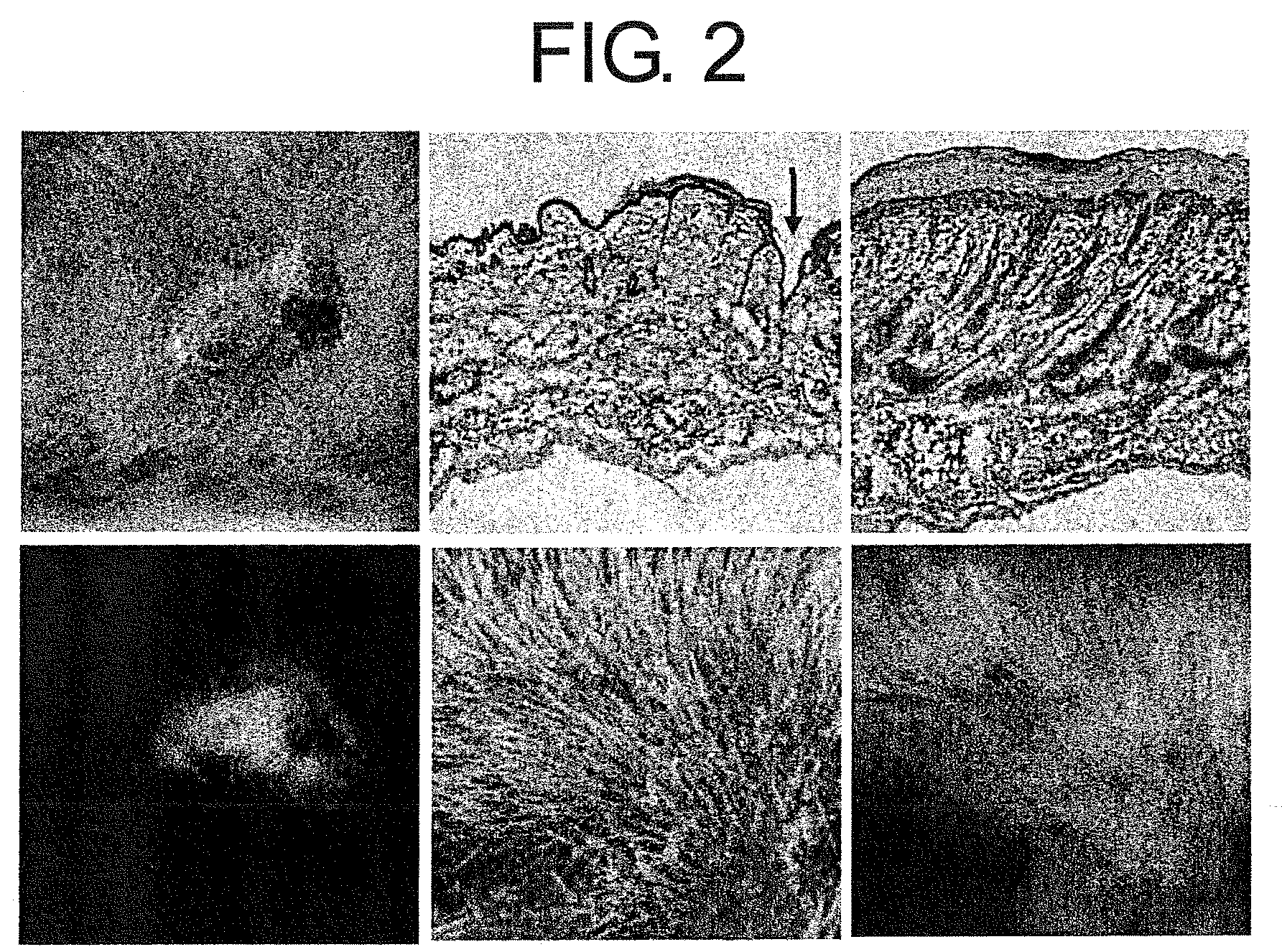Pharmaceuticals That Promote Functional Regeneration of Damaged Tissues
a technology of functional regeneration and pharmaceuticals, applied in the field of pharmaceuticals that promote functional regeneration of damaged tissues, can solve the problems of difficult total removal of neuroglioma arising from cerebral parenchymal cells, bone marrow-derived stem cells, and the like, and achieve the effect of promoting functional tissue regeneration
- Summary
- Abstract
- Description
- Claims
- Application Information
AI Technical Summary
Benefits of technology
Problems solved by technology
Method used
Image
Examples
example 1
[0115]Objective: Assessment of the contribution of bone marrow-derived cells towards functional regeneration of skin tissue transplanted to a living body.
[0116]Method: In view of the above objective, studies were carried out by the following methods.
1) Utilizing the live skin transplant system of GFP bone marrow-transplanted mice, the degree of contribution of bone marrow-derived cells towards functional regeneration of grafted skin was examined. Specifically, 6 to 8-week-old male C57BL / 6 mice were irradiated with a lethal dose of radiation (10 Gy), and immediately after that, GFP (green fluorescent protein) transgenic mouse-derived bone marrow cells (5×106 cells / 0.1 ml of physiological phosphate buffer solution at pH 7.4) were transplanted through the caudal vein (FIG. 1)
2) The transplanted bone marrow cells were allowed to engraft (for 6 weeks), and as a result, a GFP bone marrow-transplanted mice was obtained. Then, skin of a neonatal mouse (female) was transplanted to the dorsal...
example 2
[0120]Objective: Identification of a bone marrow-derived mesenchymal stem cell-inducing factor in a skin tissue extract
[0121]Method: With the objective of identifying a bone marrow-derived mesenchymal stem cell-mobilizing factor which is expected to be released from excised skin under hypoperfusive conditions, studies were carried out by the following methods.
1) To obtain mouse bone marrow-derived mesenchymal stem cells, bone marrow cells were collected from the femur or crus bone of C57BL / 6 mice, and then were spread on a cell culture plate having a 10% fetal bovine serum-containing D-MEM (Nacalai) as a cell culture medium, and then were cultured under the condition of 5% CO2 at 37° C. When the cells proliferated to the point of occupying 70 to 100% of the bottom area of the culture plate, the cells were peeled off from the culture plate using 0.25% trypsin 1 m MEDTA (Nacalai), and were then cultured under the above conditions. This passing and culturing procedure was repeated at l...
example 3
[0125]Objective: Identification of the HMGB1 family in the skin extract and examination of bone marrow mesenchymal stem cell-inducing activity
[0126]Method: Whether or not the neonatal mouse skin extract contained the HMGB protein family was confirmed using the Western blot method. Ten μl of the skin extract obtained in [Example 2] was used as a sample and subjected to SDS-PAGE electrophoresis. The proteins separated within the gel were transferred onto a PVDF membrane using a blotting device (ATTO). The membrane was incubated with PBS containing 3% skim milk and 0.1% Tween 20 (S-T-PBS) at room temperature for 1 hour, and then was allowed to react with each of rabbit anti-mouse HMGB1 antibody, rabbit anti-mouse HMGB2 antibody, or rabbit anti-mouse HMGB3 antibody which were diluted 1000-fold with S-T-PBS, at 4° C. for 16 hours. After the reaction, the PVDF membrane was washed with S-T-PBS five times for 5 minutes. Then, the PVDF membrane was incubated with 2000-fold diluted (diluted w...
PUM
| Property | Measurement | Unit |
|---|---|---|
| immersion time | aaaaa | aaaaa |
| immersion time | aaaaa | aaaaa |
| immersion time | aaaaa | aaaaa |
Abstract
Description
Claims
Application Information
 Login to View More
Login to View More - R&D
- Intellectual Property
- Life Sciences
- Materials
- Tech Scout
- Unparalleled Data Quality
- Higher Quality Content
- 60% Fewer Hallucinations
Browse by: Latest US Patents, China's latest patents, Technical Efficacy Thesaurus, Application Domain, Technology Topic, Popular Technical Reports.
© 2025 PatSnap. All rights reserved.Legal|Privacy policy|Modern Slavery Act Transparency Statement|Sitemap|About US| Contact US: help@patsnap.com



